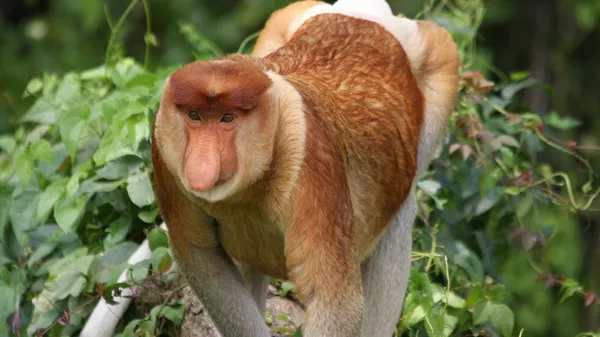Lemurs, the charismatic primates native to the island of Madagascar, are among the most endangered and unique species on the planet. With their distinctive appearance, social behaviors, and ecological roles, lemurs play a crucial role in the biodiversity of Madagascar’s ecosystems. However, due to habitat loss, fragmentation, and human activities such as hunting and deforestation, many lemur species are facing unprecedented threats to their survival. In this article, we’ll delve into the plight of the most endangered lemur species, the Alaotran gentle lemur (Hapalemur alaotrensis), shedding light on its ecology, conservation status, and the efforts underway to protect this critically endangered primate.
The Alaotran Gentle Lemur
The Alaotran gentle lemur, also known as the Alaotran bamboo lemur, is a small, arboreal primate endemic to the wetlands and marshes surrounding Lake Alaotra in eastern Madagascar. With its soft, woolly fur, long tail, and large, expressive eyes, the Alaotran gentle lemur is an iconic symbol of Madagascar’s unique biodiversity. However, despite its endearing appearance, this species faces numerous threats to its survival, primarily due to habitat loss and degradation caused by human activities.
Habitat Loss and Fragmentation
One of the primary threats facing the Alaotran gentle lemur is habitat loss and fragmentation, driven by human encroachment, agriculture, and urbanization. The wetlands and marshes surrounding Lake Alaotra, the lemur’s primary habitat, have experienced significant degradation and conversion for rice cultivation, livestock grazing, and human settlements. As a result, the once-expansive habitats of the Alaotran gentle lemur have been reduced to isolated fragments, further exacerbating the species’ vulnerability to extinction.
Climate Change and Environmental Degradation
In addition to habitat loss and fragmentation, climate change and environmental degradation pose significant threats to the survival of the Alaotran gentle lemur. Rising temperatures, unpredictable weather patterns, and altered precipitation regimes can disrupt the lemur’s habitat, reduce food availability, and increase competition with other species. Furthermore, pollution, habitat degradation, and invasive species introductions further compound the challenges facing this already imperiled primate.
Conservation Efforts and Initiatives
Despite the numerous challenges facing the Alaotran gentle lemur, concerted efforts are underway to protect and conserve this critically endangered species. Local and international organizations, research institutions, and governmental agencies are collaborating on conservation initiatives aimed at mitigating threats, restoring habitats, and raising awareness about the importance of lemur conservation. Key conservation strategies include:
Habitat Restoration and Protection: Efforts to restore and protect the wetlands and marshes surrounding Lake Alaotra are essential for safeguarding the Alaotran gentle lemur’s habitat and ensuring its long-term survival. Conservation organizations work with local communities to establish protected areas, implement sustainable land management practices, and promote alternative livelihoods that reduce dependence on natural resources.
Research and Monitoring: Ongoing research and monitoring efforts are critical for understanding the ecology, behavior, and population dynamics of the Alaotran gentle lemur. By conducting population surveys, habitat assessments, and genetic studies, scientists can gather essential data to inform conservation strategies and prioritize conservation actions.
Community Engagement and Education: Engaging local communities in conservation efforts is essential for the success of lemur conservation initiatives. Conservation organizations collaborate with communities to raise awareness about the importance of protecting lemurs and their habitats, provide environmental education programs, and support sustainable development projects that benefit both people and wildlife.
Policy Advocacy and Legislation: Advocating for stronger environmental policies and legislation is crucial for addressing the underlying drivers of lemur habitat loss and degradation. Conservation organizations work with policymakers to enact laws that protect lemurs and their habitats, regulate land use practices, and enforce penalties for illegal hunting and deforestation.
Conclusion:
In conclusion, the Alaotran gentle lemur faces numerous threats to its survival, including habitat loss, fragmentation, climate change, and environmental degradation. However, through collaborative conservation efforts, research, and community engagement, there is hope for securing a future for this critically endangered species. By protecting andrestoring its habitat, raising awareness about the importance of lemur conservation, and advocating for stronger environmental policies, we can work together to ensure that the Alaotran gentle lemur and other lemur species continue to thrive in the wild for generations to come.
You Might Be Interested In:


























